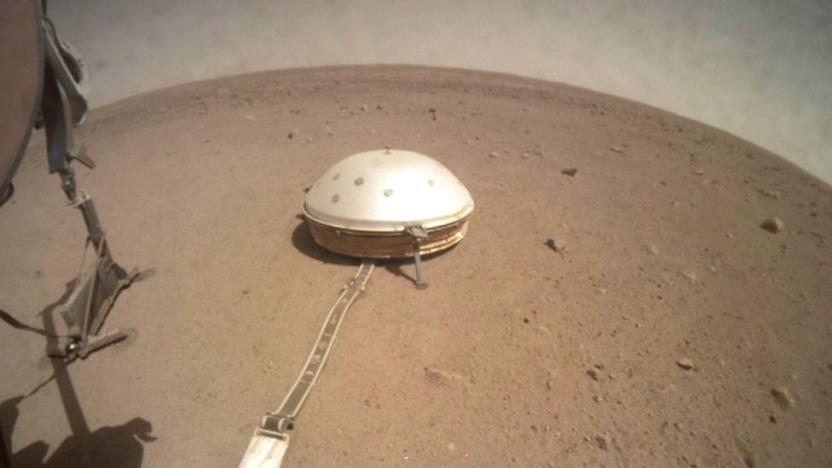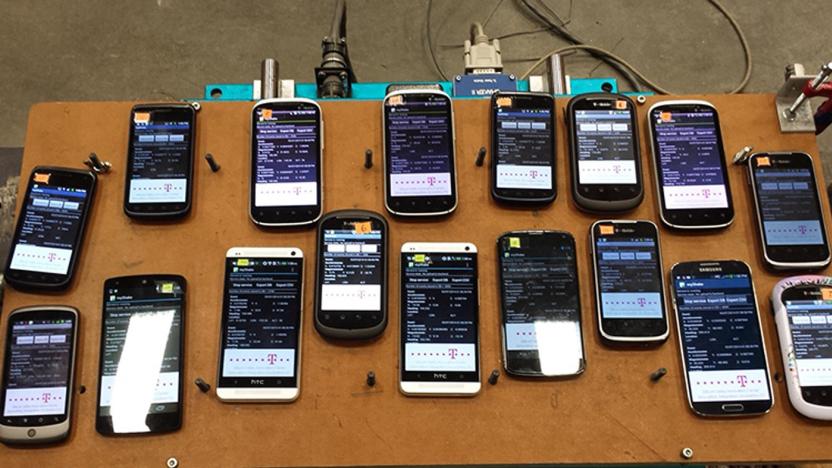seismic
Latest

NASA's InSight probe reveals the first detailed look at the interior of Mars
NASA's InSight lander arrived on Mars in 2018 to learn about its interior by monitoring "marsquakes," and now the project is starting to really pay off.

Fiber optic lines can double as earthquake detectors
You might not need an extensive sensor network or a host of volunteers to detect earthquakes in the future -- in fact, the lines supplying your internet access might do the trick. Researchers have developed technology that detects seismic activity through jiggling in fiber optic lines. Laser interrogators watch for disturbances in the fiber and send information about the magnitude and direction of tremors. The system can not only detect different types of seismic waves (and thus determine the seriousness of the threat), but spot very minor or localized quakes that might otherwise go unnoticed.

Android app turns your phone into an earthquake detector
Your smartphone can already warn you about earthquakes. UC Berkeley, however, is going one step further: it wants your phone to help detect those quakes. The school has released an Android app, MyShake, that uses your phone's motion sensors to detect the telltale signs of tremors and combine that with the data from every other user. For all intents and purposes, you become part of a crowdsourced seismic station network -- you can confirm a quake just by leaving your phone turned on. That could be a big help when there aren't enough fixed stations to trigger an alert through conventional apps.

Researcher will enable hackers to take over millions of home routers
Cisco and company, you've got approximately seven days before a security researcher rains down exploits on your web-based home router parade. Seismic's Craig Heffner claims he's got a tool that can hack "millions" of gateways using a new spin on the age-old DNS rebinding vulnerability, and plans to release it into the wild at the Black Hat 2010 conference next week. He's already tested his hack on thirty different models, of which more than half were vulnerable, including two versions of the ubiquitous Linksys WRT54G (pictured above) and devices running certain DD-WRT and OpenWRT Linux-based firmware. To combat the hack, the usual precautions apply -- for the love of Mitnick, change your default password! -- but Heffner believes the only real fix will come by prodding manufacturers into action. See a list of easily compromised routers at the more coverage link.

Standard microphones could detect buried landmines
Sure, there's already a myriad of methods for detecting and safely clearing out buried landmines, but the current options certainly aren't easy on the wallet. Thanks to a recent investigation by Georgia Tech, however, commercially available microphones could actually be used "as near-ground sensors for seismic detection of buried landmines," and if effective, could replace the rather pricey radar-based alternatives most commonly used. Recent trials using microphone data in an experimental model were said to "clearly locate buried inert landmines but exhibit more clutter than images formed with seismic displacement data collected using other techniques," but the excess noise may be worth the trouble if the cost savings prove significant.[Via NewScientistTech, image courtesy of BBC]

Japan's earthquake warning system tested out
It's a good thing that Japan's Meteorological Agency actually had the nationwide earthquake warning system ready to rock in March, as the fiber optic system was put into use this month in an attempt to warn citizens of an imminent tsunami. Reportedly, a "huge tremor" struck and triggered the system, which allowed warnings to be beamed out en masse "within a single minute." Although the system was tested before in false alarm fashion, this was the first time it had been used in a legitimate emergency, and it beat the previous options "by around one to two minutes." Sadly, it still wasn't quick enough to save everyone from the 6.9-magnitude quake, as 170 people suffered various injuries while one individual passed away, but the statistics could've been much worse had the speedy system not kicked in at all.

Tsunami alert! A3M shows off SMS warning system at CeBIT
A3M has your back if you should find yourself traveling in an area at risk of a tsunami. This clever group has its fingers in research stations all around the globe, constantly checking reports of underwater seismic activity. If a seismic event occurs, all subscribers in the affected area will receive 3 SMS flash messages in a row warning of impending doom. Subscription pricing comes in a few different flavors: one year subscription for $40, one month for $13, and a bulk package with 5 to 1000 users. The idea behind this is sound, and if it saves lives, we are all for it -- but we can't help worry that if your subscription expires or you are out of a coverage area, you could be up the creek.



